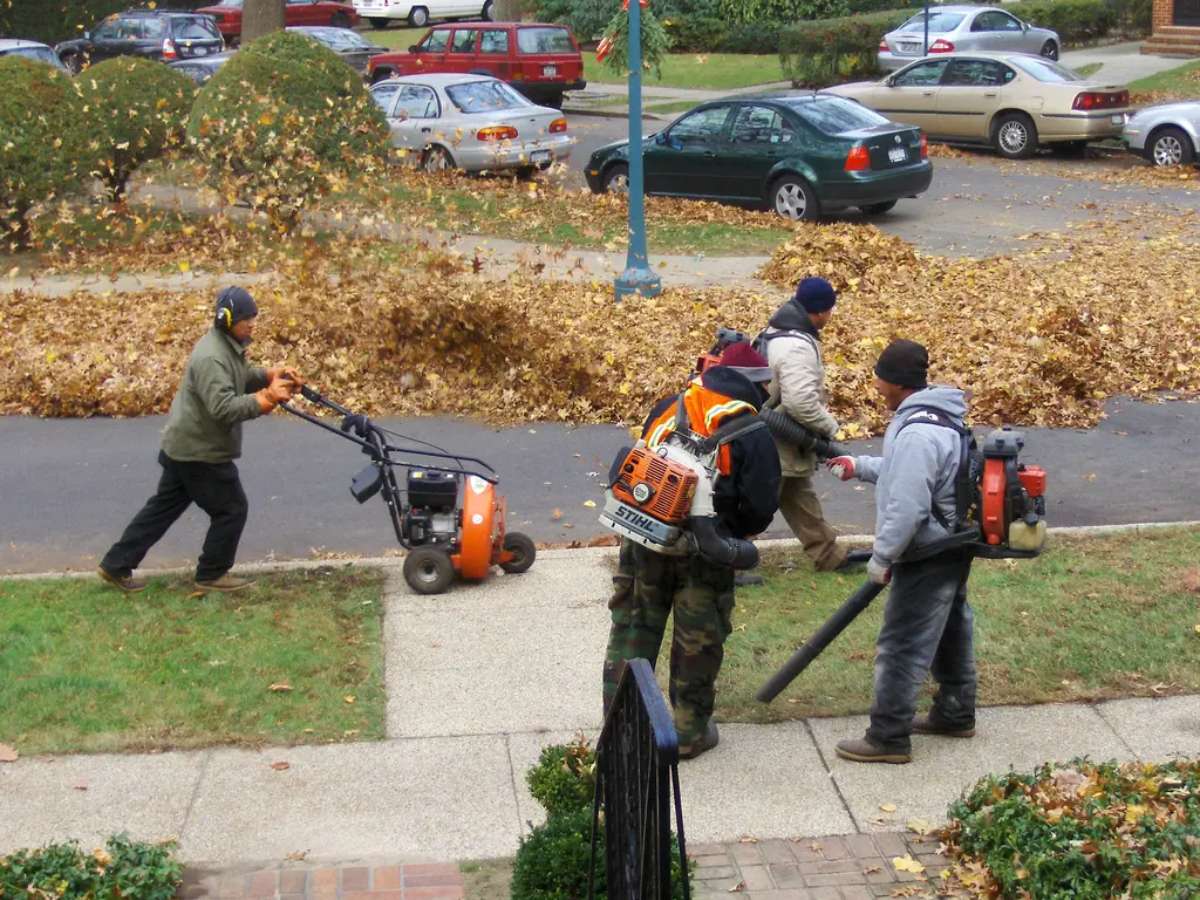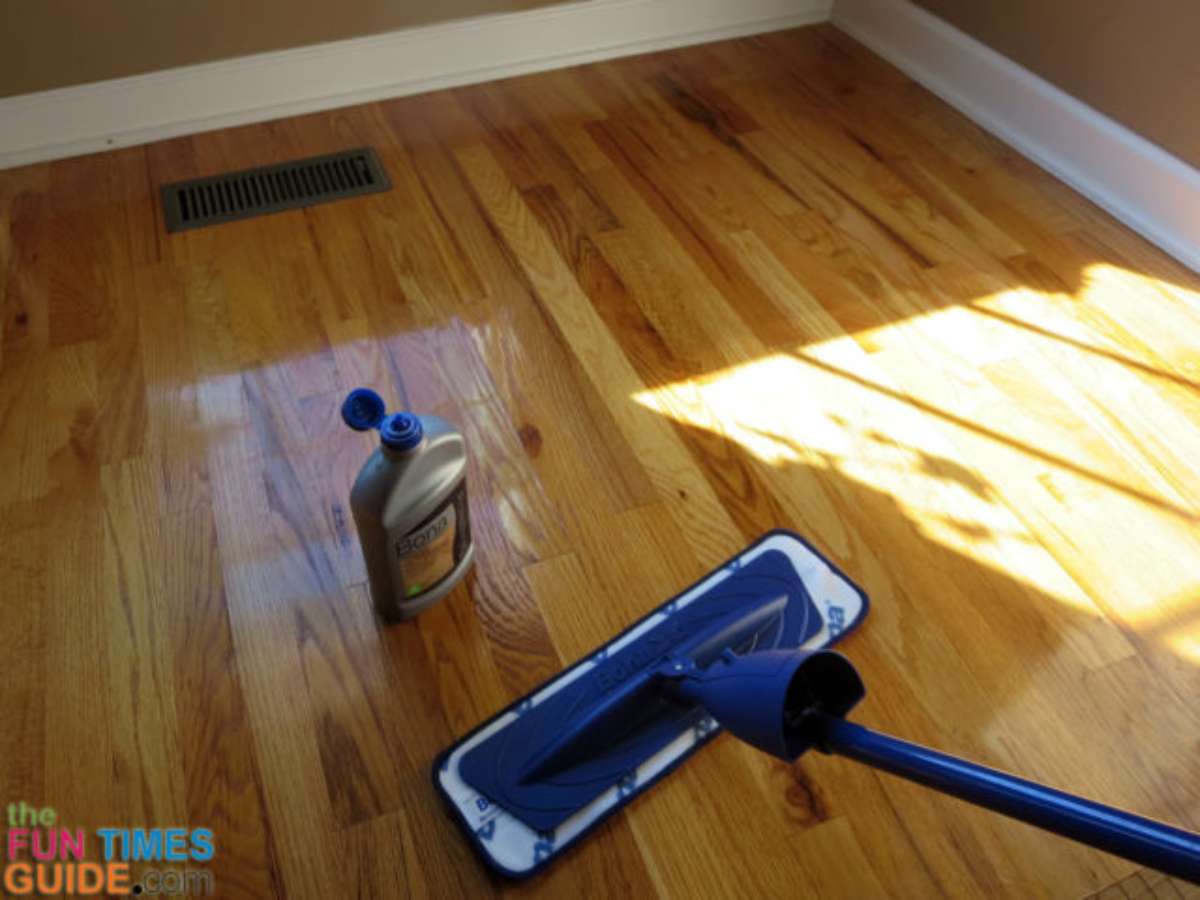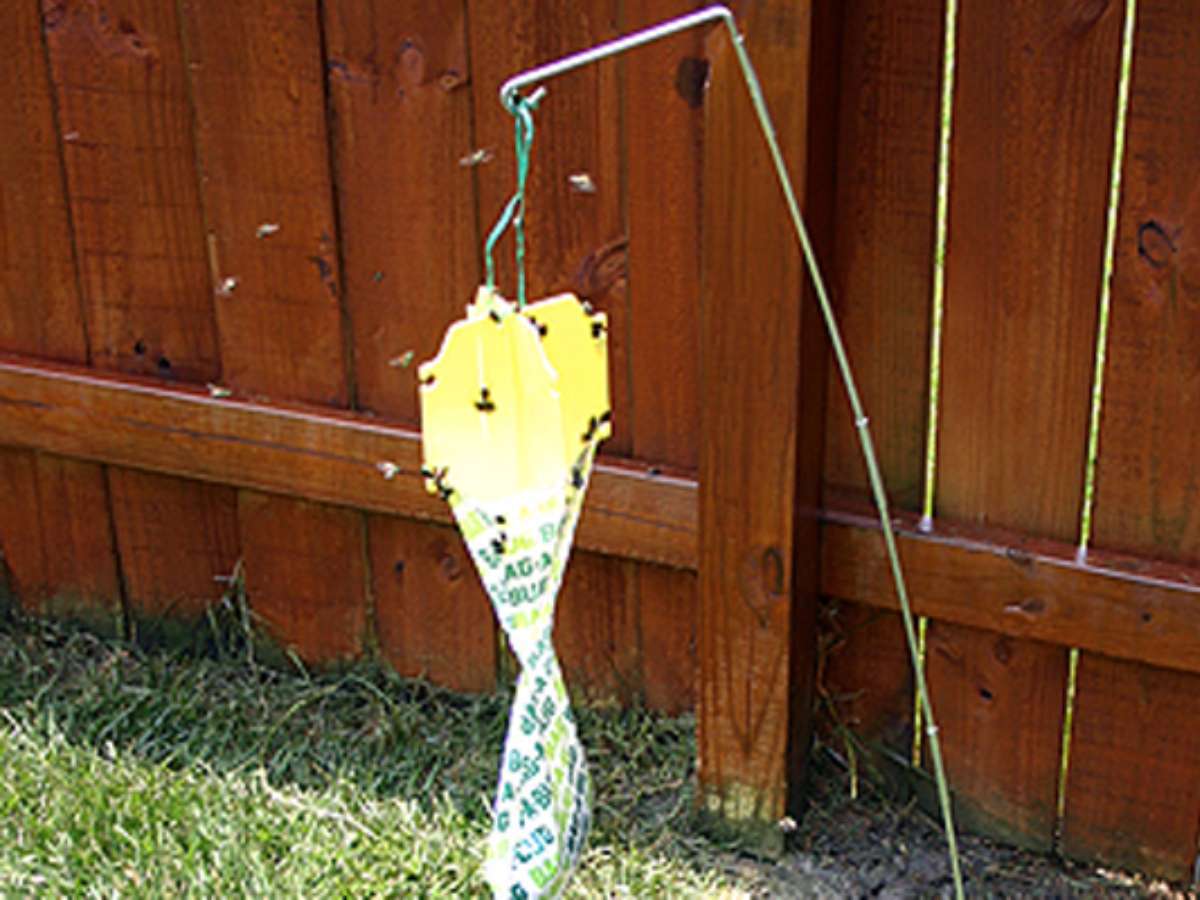Raking vs Blowing Leaves
Wow, if this isn’t a hot topic!
No matter where you live, or how much you like your neighbors, the minute a neighbor fires up a noisy leaf blower, you’re at their mercy and have to deal with the loud noise and air pollution.
Still, leaf blowers are commonly seen as the simpler, faster option when it comes to gathering leaves.
But are they really more efficient than raking?

In this article, I will discuss the pros & cons of using a leaf blower to remove leaves versus using a rake to remove the leaves.
Let’s start with leaf blowers…
The Downsides Of Leaf Blowers
Gas-powered leaf blowers hit the market in the 1970s and became ubiquitous by the 1980s. California cities in droves banned them in the 1990s, and the issue flared in Portland in 2001 and again in 2003. Fueling the California bans was a state air-quality test that found gas-powered blowers emit pollution from engine exhaust and further damage air quality by stirring up dust and allergens.
– The Oregonian
#1 – Leaf Blowers Are Noisy
The high pitched whine from a leaf blower is known to be damaging to your ears. It’s so loud that many choose to wear sound-deadening ear protection whenever they’re operating a leaf blower.
The fact is leaf blowers are so noisy that ordinances have been passed in many cities & towns limiting both the decibel rating and time of day that use of a leaf blower is allowed — frustrating many landscapers!
Some even go so far as to publish a list of allowable leaf blowers, mandating which brands and models can or cannot be used within city limits.
Noise restriction is taken seriously these days. In California fines go as high as $750, while in Toronto Canada you can be fined as much as $5,000 for disregarding noise pollution laws.
#2 – Leaf Blowers Pollute The Air
Beyond the noise pollution, you also need to consider the air pollution created when using a leaf blower.
State officials say running a gas-powered leaf blower for one hour emits the same amount of pollution as driving a 2017 Toyota Camry from Los Angeles to Denver, a distance of about 1,100 miles.
~KTLA News Station
Most leaf blowers are powered by a 2-cycle oil-burning gas motor. This type of motor is required to allow the high rpm which generates the high velocity air that blows the leaves away.
In addition to blowing leaves, there is a considerable amount of trash, dust, dirt and other allergens that are sent airborne as a result of using a leaf blower. This could greatly affect those susceptible to respiratory problems (such as asthma).
And don’t forget the smoky exhaust. Leaf blowers do actually burn oil as it’s mixed with the gas.
#3 – Leaf Blowers Alone Don’t Get Rid Of The Leaves
Blowing leaves and grass trimmings away from your property isn’t necessarily taking care of the ultimate problem: disposing of all those leaves.
You see, you can use a leaf blower to gather all of the leaves into piles, making it easier for you to pick up and dispose of them. Or, you can use a leaf blower to simply blow leaves from your property to somewhere else. Many do the latter.
Unless you pick up (or rake up) the leaves after you’ve blown them into a pile, then you’re simply redistributing the leaves, rather than eliminating them. Yes, they’re out of your yard, but now they’re simply in your next door neighbor’s yard or in the street!
After that, rain water and wind will magically simply move them out of sight and back into someone else’s yard or further on down the road. Leaves that are randomly blown away also tend to find their way down the storm sewer — causing water backups, flooded basements, and all sorts of grief for the Public Works Dept.
That’s clearly not the best way to maintain a clean, friendly community around you.
The Best Things About Leaf Blowers
Of course there are some good reasons to use a leaf blower. They’re faster, easier, and require less effort than raking does.
Unfortunately, most leaf blowers are used improperly from the get-go.
For example, instead of using a leaf blower to clear an entire lawn of leaves, a leaf blower should be used primarily for the purpose of blowing leaves from around closely placed ornamental plants where raking is awkward. That is the strength of a leaf blower!
Leaf blowers also are great for blowing grass clippings off your sidewalks and driveway and back into your lawn. Sending freshly cut grass clippings back into your lawn is actually good for your lawn.
Is Leaf Blowing Faster Than Raking?
I don’t know, you tell me…
In another 3-phase test, comparing a well-muscled leaf blower to a diminutive grandmother with a rake, the rake and broom were as fast as the leaf blower.
Of course, if you use 2 leaf blowers at once, you might get the job done faster!
The Downsides Of Raking Leaves
Rakes may be the most environmentally friendly way to gather leaves for bagging and disposal, but lower back injuries from raking are quite common.
There’s no doubt about it, raking leaves is strenuous exercise. Without proper conditioning, things like strains, sprains, and even heart attacks can occur.
When raking, your best bet is to split the project into pieces: rake one day, bag the next. Be sure to place an inexpensive tarp over your leaf pile — to keep the leaves from blowing around while you rest up overnight.
Mulching Leaves vs. Bagging Them
Before you send your bagged leaves off to the trash, consider the fact that leaves can be turned into compost (a.k.a. black gold for your garden).
Composting leaves takes as little effort as setting up a chicken-wire cage to contain them while Mother Nature does all the work.

All I do is pile them into one corner of my yard out of sight by some bushes where the wind can’t reach them. By the next year, they’ve reduced to a fraction of their original size. When I need some compost, I simply dig down to the bottom of the pile. I might remember to turn the pile over once a year, but probably not. They’ll compost down, regardless.
Personally, I think removing leaves from your lawn is a bad plan altogether. Mother Nature deposits them there for a purpose: to feed and nourish your lawn. That’s right, mulching leaves into your lawn is the same as feeding your lawn. This results in a greener, brighter lawn the following summer.
To assist Mother Nature by getting the leaves and grass clippings into small enough pieces to be quickly digested by your grass, here’s what I do…
Toward the end of fall (well before the first snowfall), I break out my electric lawn mower. Then, I clip on the mulching attachment (which basically covers the discharge opening on the side of the mower). With the front wheels set so the front of the mower is quite a bit higher than the rear, I mow the grass — scooping in the layer of leaves on the lawn as I go.
Over a period of a couple weeks, I will mow the lawn twice this way. I do it not so much because the grass has grown, but to chew up the leaves a second time.
Then in the spring (as soon as the snow melts), I lower the front wheels on the mower and mow the lawn again — probably before the grass really needs it.



